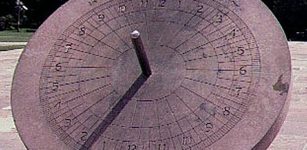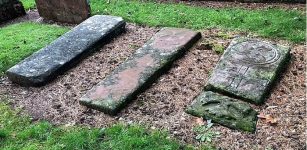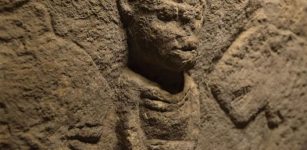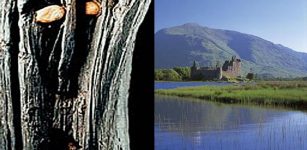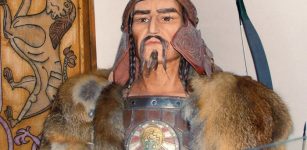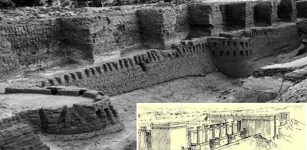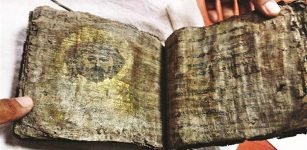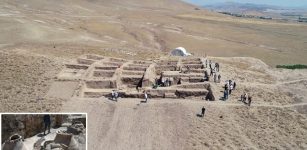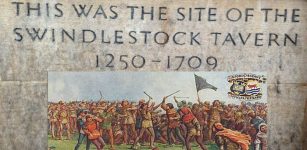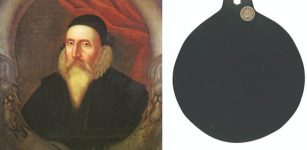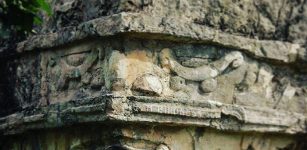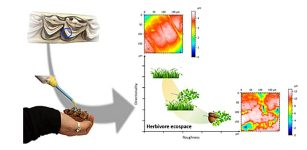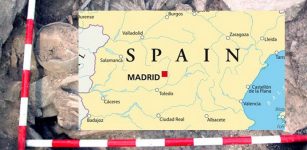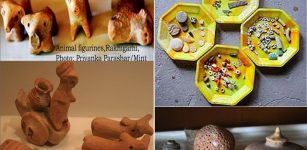Researchers Confirm Clovis People Used Great Lakes Camp Annually About 13,000 Years Ago
Conny Waters - AncientPages.com - Until recently, there was no evidence the Clovis people had settled the Great Lakes region. They appeared in North America about 13, 000 years ago during the Pleistocene epoch.
Independent researcher Thomas Talbot and University of Michigan archaeologists have found more than 20 Clovis tools and hundreds of pieces of manufacturing and refurbishment debris at the Belson Clovis Site in St. Joseph County. Credit: Daryl Marshke/Michigan Photography
During the Pleistocene, sheets of glaciers covered much of the world, including Michigan, making the land inhospitable for human settlers. But a 2021 U-M study confirmed that Clovis people built a camp, now called the Belson site, in southwest Michigan.
Researchers from the University of Michigan have confirmed that Clovis people visited the site annually, likely in the summer, for three to five consecutive years, according to study lead author Brendan Nash. Tools indicate their diet included various animals, from rabbits to musk ox.
At the Belson site, the researchers discovered tools that were made with a type of stone called chert from what is now western Kentucky, about 400 miles from the Belson site. These tools were then resharpened at the Belson site, leaving behind small pieces for researchers to analyze.
Thomas Talbot, an independent researcher who discovered the first Clovis point at the Belson site in Mendon, Michigan, in 2008, also conducts the group's chert analysis. He discovered some of these chert pieces were from Paoli chert, which formed in northeastern Kentucky.
"It took me a year to identify it, and when I did, it was very surprising," Talbot said. "Then we found a broken base, which we call a diagnostic. The broken base was made from that Paoli material. Once you read the paper and look at the data and maps, there are some patterns that are starting to emerge that are pretty cool."
Tools made in Kentucky were traded to central Indiana and then carried to the Belson site. Nash suggests that people settled on the Belson site in summer and lived in central Indiana during winter, trading for tools from western Kentucky along yearly routes.
St. Joseph County resident and independent researcher Thomas Talbot found each half of this Clovis spear point 20 years apart. Credit: Daryl Marshke/Michigan Photography
"In this way, people formed 'links in a chain' with yearly routes that likely connected the whole continent, from Michigan to Mexico," Nash said. "This is likely why technology from the Clovis period is so similar throughout most of North America."
The Clovis period is known for distinctive spear points with a central channel, or flute, used to attach a shaft to the spearhead. This created a composite hunting weapon for prey of all sizes. The Clovis also made their points by striking large flakes off stone, which had razor-sharp edges and served as expedient knives.
It is currently unclear where in the Americas Clovis technology was invented, but once it was, it spread quickly, according to archaeological standards. Researchers think they are one of the earliest groups of people to settle the Americas, and prior to the 2021 study, Clovis technology had not been reported from the Great Lakes region.
According to Talbot, the first Clovis point on the Belson farm field was in 2008. He identified it by its shape and Attica chert material, sourced from 120 miles away in western Indiana and eastern Illinois. Talbot confirmed his findings with U-M archaeologist Henry Wright.
Wright and Talbot visited the site in 2017, finding finished tools and small flakes of Attica chert, which made them suspect people had lived at the site rather than simply dropping a point or tool cache as they were passing through. Talbot, Wright and Nash's 2021 study described the surface sampling of the site.
The study examines buried flakes and tools found in undisturbed sediment beneath plowed surface layers, created by the Clovis people during tool resharpening or making.
Researchers examined three stone tools for protein traces, finding evidence of musk ox, caribou or deer, hare, and peccary. The hare and peccary proteins came from the same Clovis point.
"Taken together, the ancient protein data suggests that these people had a broad spectrum diet, eating a wide variety of animals," Nash said. "Our findings are contrary to the popular notion that Clovis people were strictly big game hunters, most often subsisting on mammoths and mastodons."
Nash says the Clovis people would have also eaten plants, but plant material does not show up on protein tests, and unlike animal bones, their remains don't typically last for 13,000 years.
"This site teaches us about a way of life lost to time," Nash said. "Through the sourcing of stone and the styles of tools, we are tracking a group of people as they live and travel across the Pleistocene landscape of the American Midwest."
Paper
source: University of Michigan via Eurekalert
Written by Conny Waters - AncientPages.com Staff Writer



